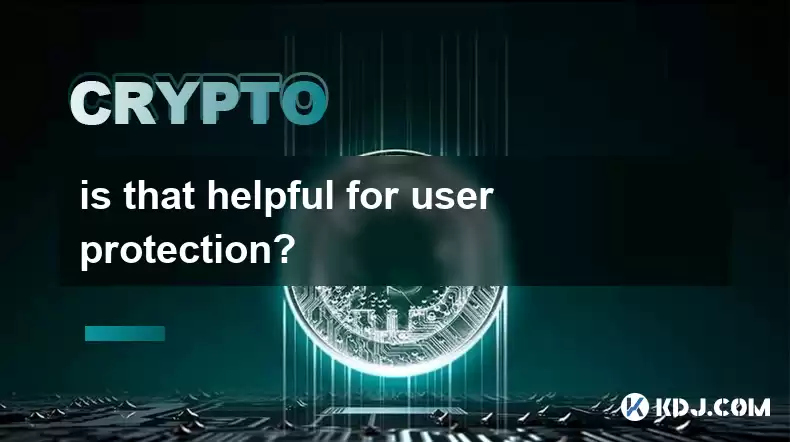-
 Bitcoin
Bitcoin $118300
1.01% -
 Ethereum
Ethereum $4215
0.69% -
 XRP
XRP $3.198
-3.83% -
 Tether USDt
Tether USDt $1.000
-0.01% -
 BNB
BNB $803.4
-0.53% -
 Solana
Solana $180.3
-0.67% -
 USDC
USDC $0.9998
-0.01% -
 Dogecoin
Dogecoin $0.2334
-1.49% -
 TRON
TRON $0.3394
0.86% -
 Cardano
Cardano $0.7980
-1.45% -
 Chainlink
Chainlink $22.19
6.65% -
 Hyperliquid
Hyperliquid $43.41
0.13% -
 Stellar
Stellar $0.4407
-3.13% -
 Sui
Sui $3.843
-2.24% -
 Bitcoin Cash
Bitcoin Cash $564.7
-3.74% -
 Hedera
Hedera $0.2588
-3.41% -
 Ethena USDe
Ethena USDe $1.001
0.00% -
 Avalanche
Avalanche $23.64
-3.37% -
 Litecoin
Litecoin $120.0
-4.01% -
 Toncoin
Toncoin $3.342
-1.11% -
 UNUS SED LEO
UNUS SED LEO $9.038
0.60% -
 Shiba Inu
Shiba Inu $0.00001347
-0.81% -
 Uniswap
Uniswap $10.69
-4.58% -
 Polkadot
Polkadot $4.034
-1.30% -
 Dai
Dai $1.000
0.01% -
 Bitget Token
Bitget Token $4.472
-1.52% -
 Cronos
Cronos $0.1571
-3.04% -
 Pepe
Pepe $0.00001207
-2.21% -
 Monero
Monero $273.8
-3.19% -
 Ethena
Ethena $0.7520
2.75%
is that helpful for user protection?
Centralized crypto exchanges implement protective measures like KYC compliance, secure storage, and two-factor authentication, but users should be aware of risks such as centralized control, regulatory uncertainty, market manipulation, and insider trading.
Feb 06, 2025 at 10:06 am

Centralized Crypto Exchanges: Regulations, Protections, and Considerations for User Safety
Key Points:
- Understanding the regulatory landscape surrounding centralized crypto exchanges (CEXs)
- Analyzing the protective measures implemented by major CEXs
- Examining potential risks and concerns for user safety
- Exploring additional measures for ensuring user protection
Centralized Crypto Exchanges: An Overview
Centralized crypto exchanges serve as intermediaries in the cryptocurrency market, enabling users to trade digital assets. Unlike decentralized exchanges (DEXs), CEXs maintain control over user funds and trading operations. This centralized model introduces additional regulatory complexities and potential concerns for user protection.
Regulatory Landscape for Centralized Crypto Exchanges
Regulatory efforts for CEXs vary widely across jurisdictions. Some countries, such as the United States, have imposed comprehensive regulations requiring CEXs to register with regulatory agencies, comply with anti-money laundering (AML) and know-your-customer (KYC) protocols, and maintain robust security measures. Other jurisdictions, such as Malta, have adopted more favorable regulatory frameworks that encourage CEX innovation while safeguarding user protection.
Protective Measures Implemented by Major CEXs
To enhance user safety, major CEXs have implemented a range of protective measures, including:
- KYC and AML Compliance: Exchanges conduct identity verification and background checks to prevent illegal activities and protect users from fraud.
- Secure Storage: Crypto assets are stored in cold wallets or other secure storage solutions to minimize the risk of theft or unauthorized access.
- Two-Factor Authentication: Users are required to provide additional verification steps, such as a code sent via SMS or email, when logging in or making withdrawals.
- Encryption: Data and communications are encrypted to ensure privacy and protect sensitive information.
- Insurance Policies: Some exchanges offer insurance to cover losses due to hacks or other security breaches.
Potential Risks and Concerns for User Safety
Despite the protective measures in place, users of centralized crypto exchanges should be aware of potential risks:
- Centralized Control: CEXs hold custody of user funds and trading data, creating a single point of failure if the exchange experiences a breach or becomes insolvent.
- Regulatory Uncertainty: The regulatory landscape for CEXs is still evolving, and changes in regulations could impact user safety and access.
- Market Manipulation: CEXs have the potential to engage in market manipulation or trade against their own users, which could impact fair trading practices.
- Insider Trading: Employees or insiders with access to non-public information could engage in insider trading, benefiting themselves at the expense of users.
Additional Measures for Ensuring User Protection
- Educate Yourself: Users should understand the risks associated with CEXs and take steps to protect their own funds, such as using strong passwords and avoiding phishing scams.
- Use Reputable Exchanges: Choose CEXs with a strong track record of security and compliance.
- Diversify Your Holdings: Do not rely solely on one CEX; spread your assets across multiple exchanges to mitigate risk.
- Consider Hardware Wallets: For enhanced security, consider storing your crypto assets in a hardware wallet.
FAQs
Q: What is the regulatory landscape for centralized crypto exchanges?
A: Regulatory efforts vary across jurisdictions, with some countries implementing comprehensive regulations while others adopt more favorable frameworks.
Q: What happens if a centralized crypto exchange is hacked?
A: If an exchange experiences a breach, it could result in the loss of user funds or personal data. Some exchanges offer insurance to mitigate such risks.
Q: What are the potential risks of using centralized crypto exchanges?
A: Centralized control, regulatory uncertainty, market manipulation, and insider trading are some potential risks to consider.
Q: How can I protect myself when using centralized crypto exchanges?
A: Use reputable exchanges, educate yourself about the risks, use strong passwords, and consider using a hardware wallet for enhanced security.
Disclaimer:info@kdj.com
The information provided is not trading advice. kdj.com does not assume any responsibility for any investments made based on the information provided in this article. Cryptocurrencies are highly volatile and it is highly recommended that you invest with caution after thorough research!
If you believe that the content used on this website infringes your copyright, please contact us immediately (info@kdj.com) and we will delete it promptly.
- Cold Wallet's Hot Streak: Acquisition, User Growth, and How it Stacks Up Against Ethereum & XRP
- 2025-08-10 20:30:16
- Bitcoin, Cloud Mining, and Crypto Earnings: What's Hot in 2025?
- 2025-08-10 20:50:12
- Presale Cryptos Face-Off: BlockDAG, TOKEN6900, and the Hunt for the Next Big Thing
- 2025-08-10 20:55:12
- DeFi, Meme Coins, and 2025: Navigating the Crypto Landscape
- 2025-08-10 20:30:16
- Cardano, Returns, and Trade Deals: A New Yorker's Take
- 2025-08-10 18:50:16
- Dogwifhat's Comeback: Solana Meme Coin Mania and Beyond!
- 2025-08-10 18:30:15
Related knowledge

What is Ethereum’s Slashing mechanism and how to punish malicious behavior?
Feb 20,2025 at 03:08am
Key PointsOverview of slashingDifferent types of slashing in EthereumIncentives and consequences of slashingIdentifying and reporting slashed validato...

What is the verifier node of Ethereum and how to become a verifier?
Feb 19,2025 at 06:00pm
The Verifier Node of Ethereum: A Comprehensive GuideKey Points:What is a Verifier Node?How to Become a Verifier NodeResponsibilities and Rewards of a ...

What is Ethereum’s staking, and how to participate and earn money?
Feb 19,2025 at 04:37pm
Key Points:Understanding Ethereum's Staking MechanismSteps to Participate in StakingBenefits and Rewards of StakingSecurity and Risk ConsiderationsTec...

What is Ethereum’s DAO (Decentralized Autonomous Organization) and how does it work?
Feb 20,2025 at 03:12am
Key PointsDefinition and Structure of a DAOGovernance and Decision-Making in DAOsBenefits and Use Cases of DAOsChallenges and Limitations of DAOsWhat ...

What is Ethereum's multi-signature wallet and how to improve security?
Feb 20,2025 at 02:18pm
Key Points:Understanding the Concept of a Multi-Signature WalletBenefits and Drawbacks of Multisig WalletsRequirements for Setting Up a Multisig Walle...

What is Ethereum's oracle and how to provide data for smart contracts?
Feb 21,2025 at 01:30am
Key Points:Understanding the concept of oracles in EthereumExploring different types of oraclesDetailed guide on how to provide data for smart contrac...

What is Ethereum’s Slashing mechanism and how to punish malicious behavior?
Feb 20,2025 at 03:08am
Key PointsOverview of slashingDifferent types of slashing in EthereumIncentives and consequences of slashingIdentifying and reporting slashed validato...

What is the verifier node of Ethereum and how to become a verifier?
Feb 19,2025 at 06:00pm
The Verifier Node of Ethereum: A Comprehensive GuideKey Points:What is a Verifier Node?How to Become a Verifier NodeResponsibilities and Rewards of a ...

What is Ethereum’s staking, and how to participate and earn money?
Feb 19,2025 at 04:37pm
Key Points:Understanding Ethereum's Staking MechanismSteps to Participate in StakingBenefits and Rewards of StakingSecurity and Risk ConsiderationsTec...

What is Ethereum’s DAO (Decentralized Autonomous Organization) and how does it work?
Feb 20,2025 at 03:12am
Key PointsDefinition and Structure of a DAOGovernance and Decision-Making in DAOsBenefits and Use Cases of DAOsChallenges and Limitations of DAOsWhat ...

What is Ethereum's multi-signature wallet and how to improve security?
Feb 20,2025 at 02:18pm
Key Points:Understanding the Concept of a Multi-Signature WalletBenefits and Drawbacks of Multisig WalletsRequirements for Setting Up a Multisig Walle...

What is Ethereum's oracle and how to provide data for smart contracts?
Feb 21,2025 at 01:30am
Key Points:Understanding the concept of oracles in EthereumExploring different types of oraclesDetailed guide on how to provide data for smart contrac...
See all articles

























































































